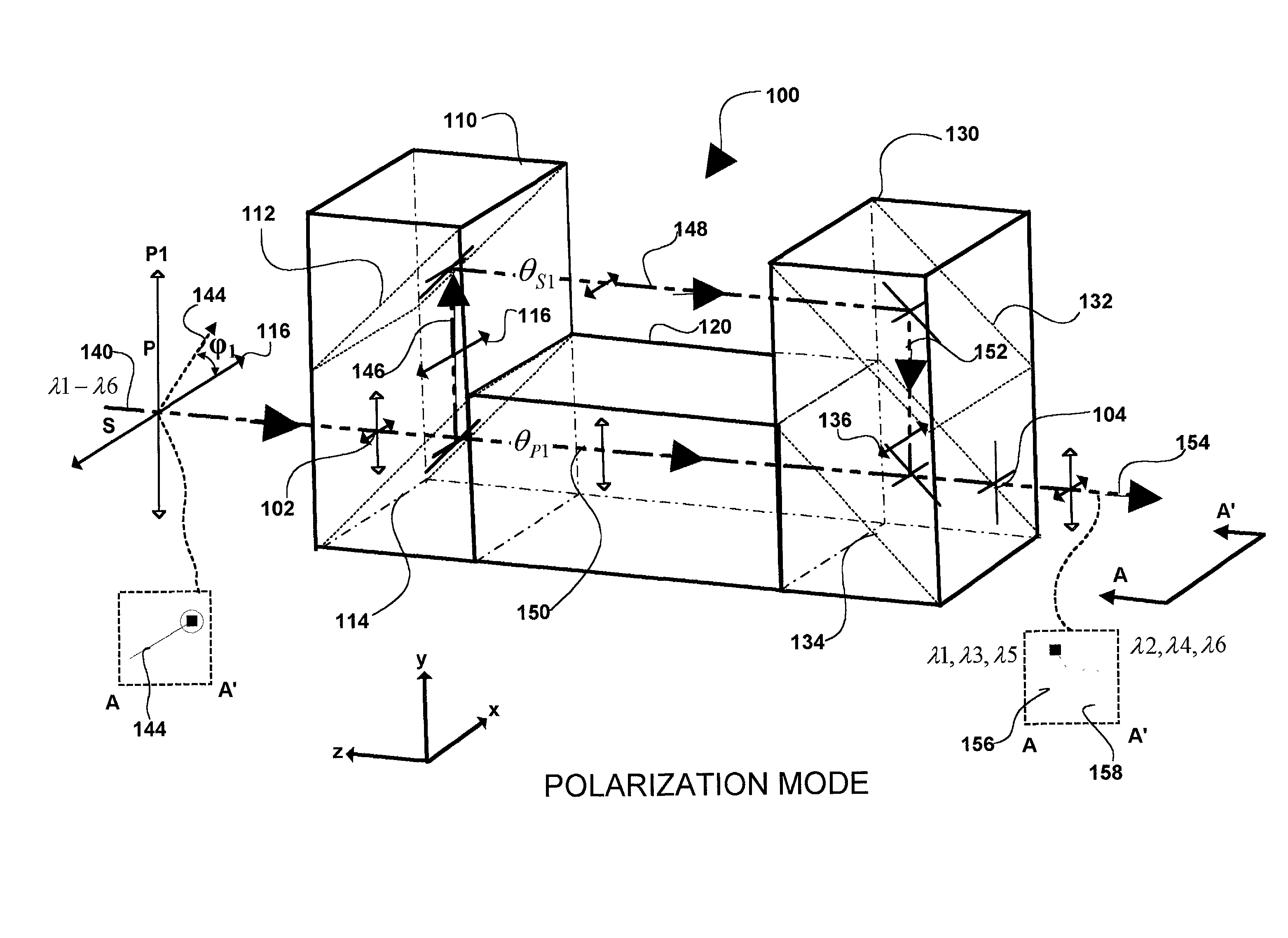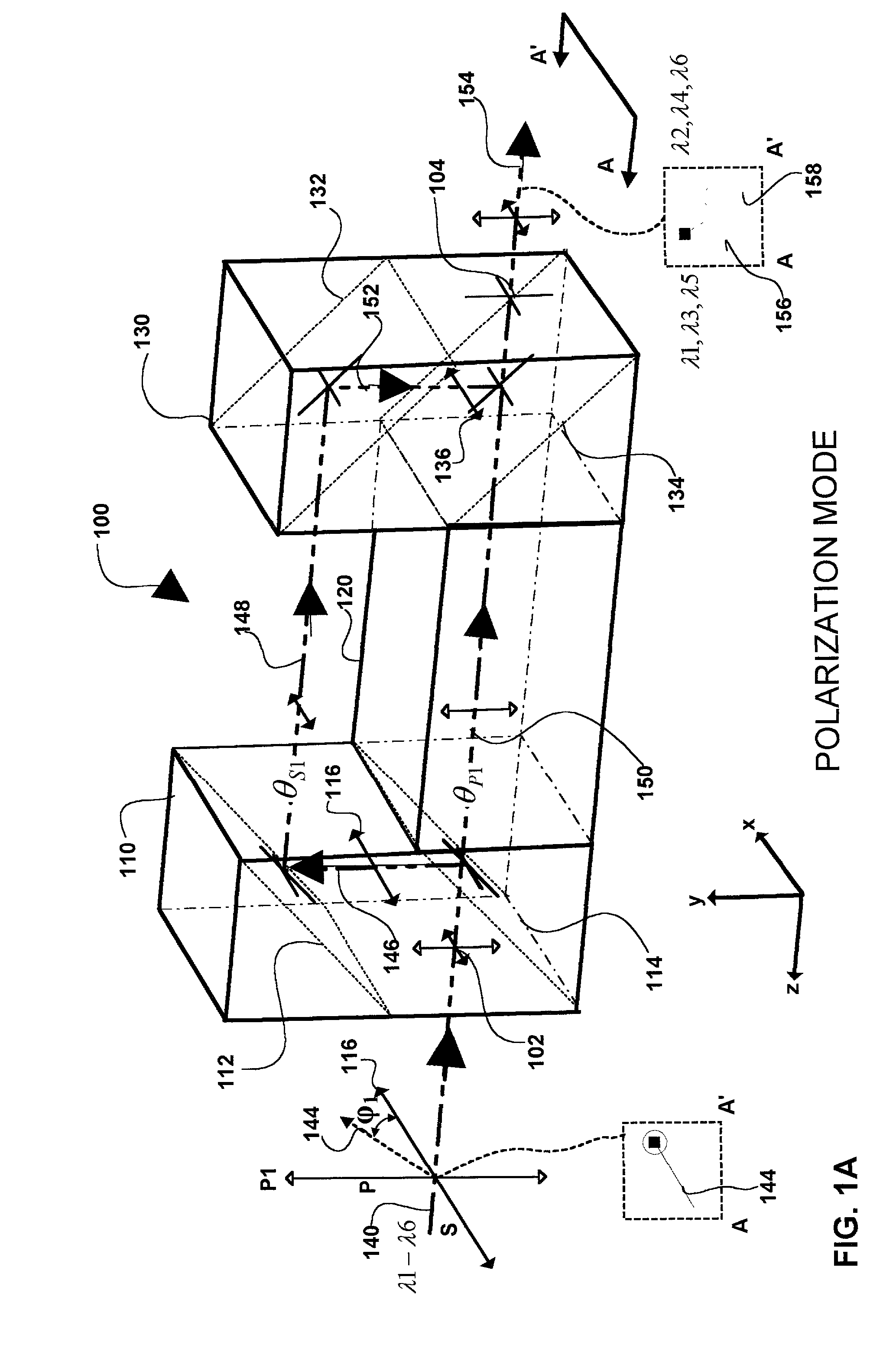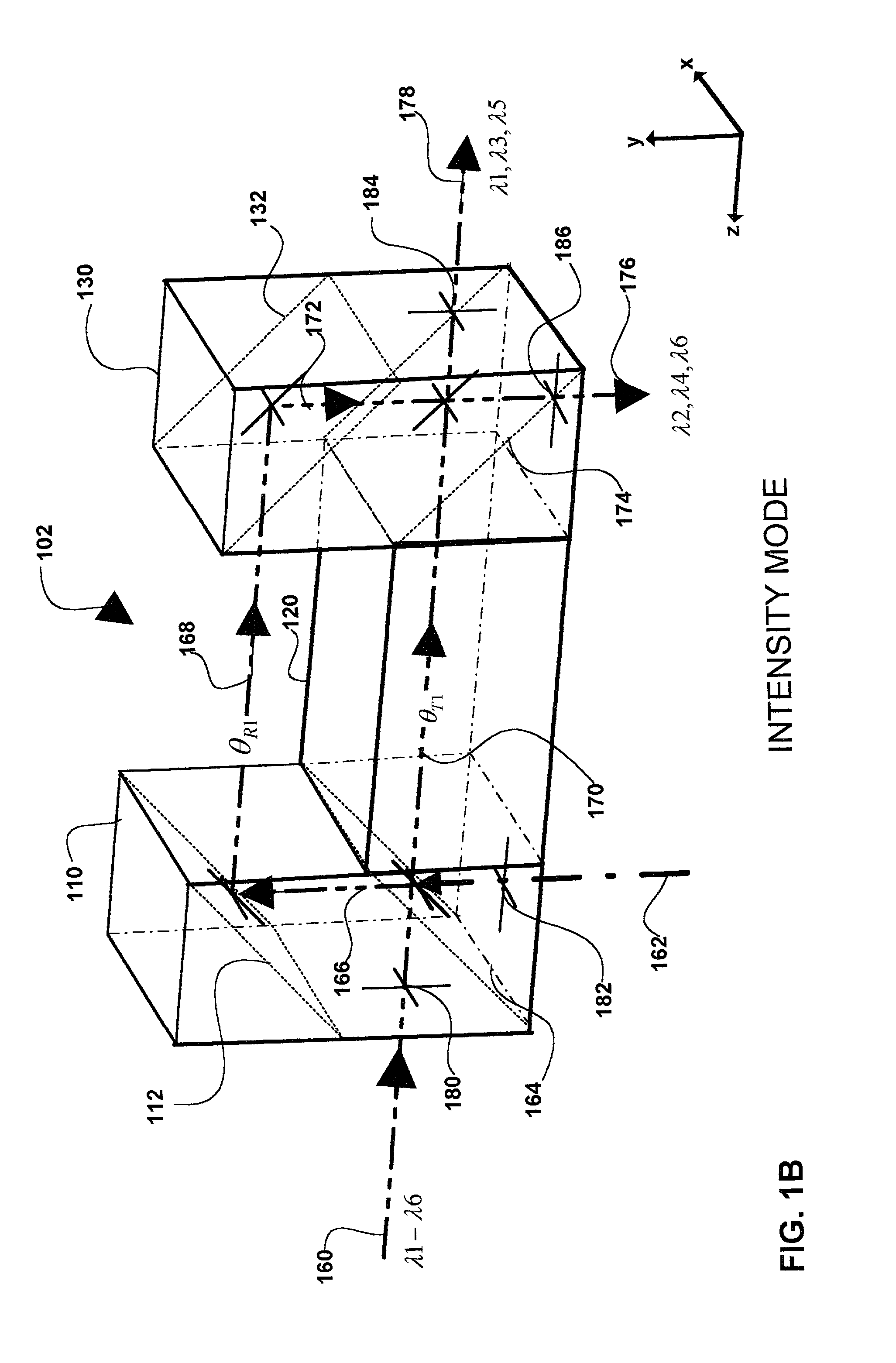Method and apparatus for an optical filter
a technology of optical filters and filters, applied in the field of optical filters, can solve the problems of limiting factors such as noise and inter-channel interference, and the requirements of optical filters used in any of these applications are very demanding, and none are fully satisfactory
- Summary
- Abstract
- Description
- Claims
- Application Information
AI Technical Summary
Problems solved by technology
Method used
Image
Examples
Embodiment Construction
[0026] FIG. 1A is an isometric view of an optical filter cell 100 with couplers employing polarization dependent beam splitting linked by a pair of delay paths 150 and 146,148,152. Each coupler transmits and reflects light depending on the input properties of the light. In the embodiment of the invention shown in FIG. 1A, each coupler is polarization sensitive and includes "P" and "S" polarization axis orthogonal to one another. A first coupler is positioned in the propagation path of incoming polarized light and transmits and reflects components of incoming polarized light aligned with the "P" and "S" polarization axis of the coupler respectively. Light transmitted and reflected by the coupler follows two distinct delay paths, one for transmitted light and the other for reflected light. Where incoming light is orthogonally polarized, the first coupler provides configurable amounts of coupling and cross-coupling of each of the orthogonal polarization vectors of the incoming light wi...
PUM
 Login to View More
Login to View More Abstract
Description
Claims
Application Information
 Login to View More
Login to View More - R&D
- Intellectual Property
- Life Sciences
- Materials
- Tech Scout
- Unparalleled Data Quality
- Higher Quality Content
- 60% Fewer Hallucinations
Browse by: Latest US Patents, China's latest patents, Technical Efficacy Thesaurus, Application Domain, Technology Topic, Popular Technical Reports.
© 2025 PatSnap. All rights reserved.Legal|Privacy policy|Modern Slavery Act Transparency Statement|Sitemap|About US| Contact US: help@patsnap.com



